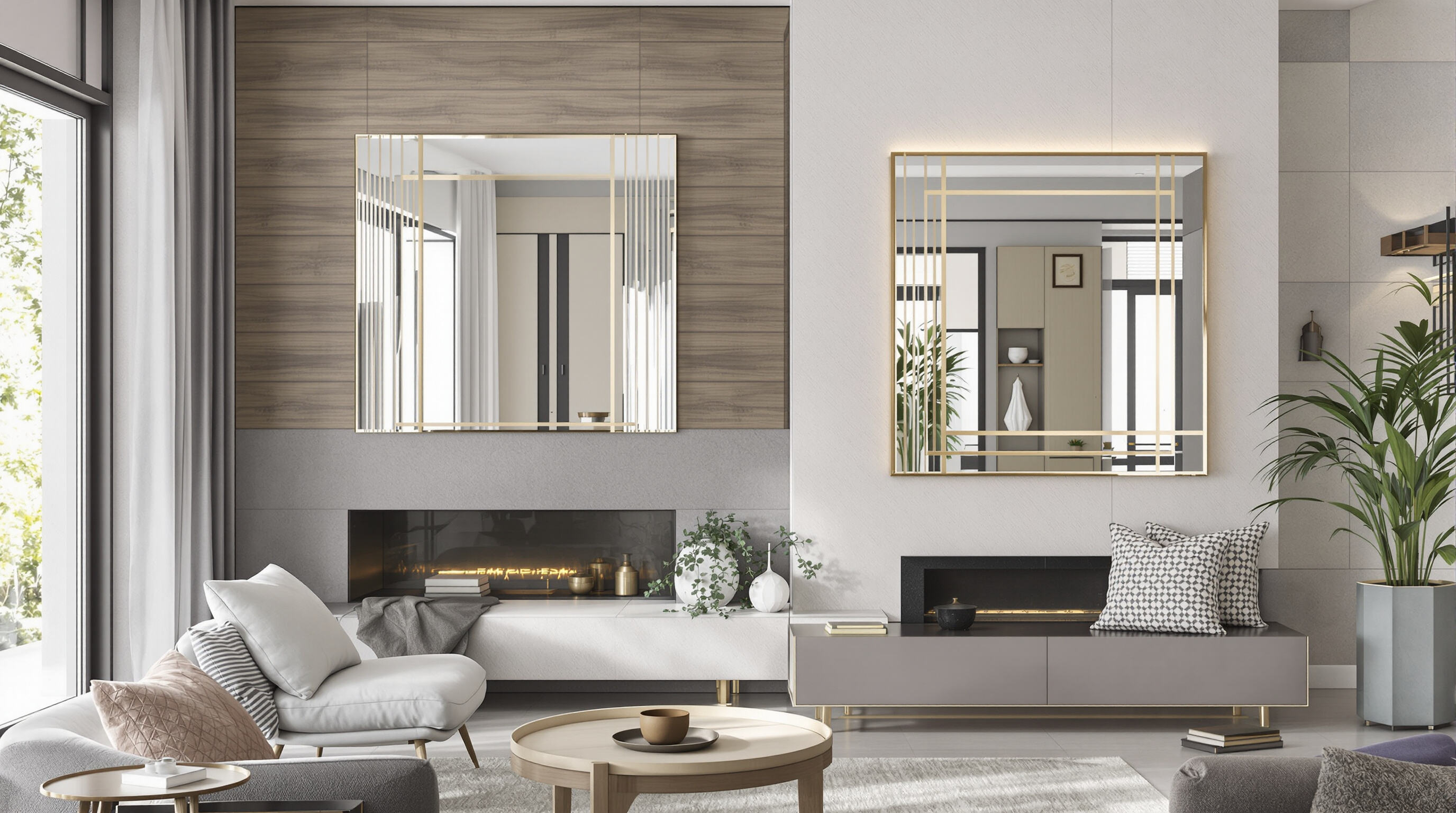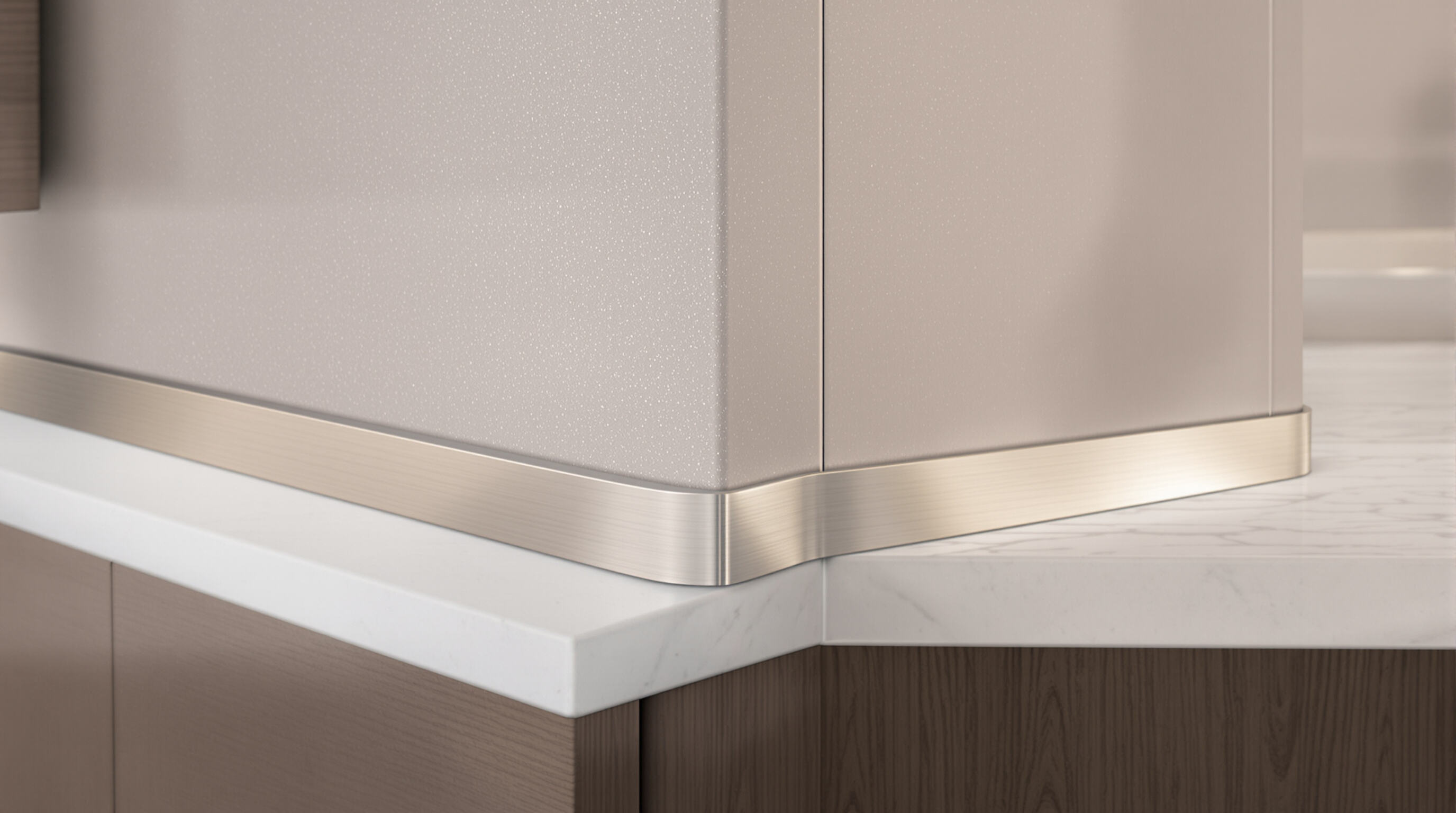How to use stainless steel decorative strips in home decoration?
Aesthetic Advantages of Stainless Steel Decorative Strips
Modern Aesthetic Appeal of Stainless Steel Decorative Strips
Stainless steel decorative strips bring a sleek, industrial elegance to contemporary interiors through clean lines and reflective surfaces. Their ability to amplify both natural and artificial light enhances spatial perception, making them ideal for open-concept homes and commercial spaces where visual continuity is key.
How Brushed and Polished Finishes Enhance Visual Elegance
The brushed finish gives off this nice, subtle sheen that really works well with those clean lines of modern kitchen spaces and office dividers. When it comes to polished options though, they bring that eye-catching sparkle which makes all the difference in hallways or bathroom vanities. Plus, these polished surfaces last longer than chrome without breaking the bank as much. Many interior designers actually combine the two types together on things like accent walls or staircase handrails. It creates this interesting contrast between matte and shiny areas that adds visual interest to otherwise flat surfaces.
Embossed Textures and Their Role in Design Sophistication
Embossed stainless steel strips introduce tactile richness with geometric patterns like linear waves or diamond grids. These textures not only conceal scratches and fingerprints but also improve slip resistance on staircase edges. Functionally, they serve as seamless transitions between flooring materials while elevating the design narrative of a space.
Stainless Steel as a Symbol of Contemporary Minimalism
Neutral and timeless, stainless steel supports diverse color schemes—from monochrome palettes to bold accent walls-without competing for attention. Unlike painted trims that degrade over time, it retains its finish for 15-20 years (American Institute of Architects 2023), embodying minimalist design principles through enduring, low-maintenance beauty.
Key Applications of Stainless Steel Decorative Strips in Interior Design

Integration with other materials: pairing metal strips with wood, glass, and stone
Stainless steel strips really stand out next to natural materials. Wood works especially well since it brings warmth to what would otherwise be cold metal surfaces. A recent survey from last year showed about two thirds of designers prefer this mix for their projects. The thin lines of steel make glass look cleaner somehow, and those metal inserts highlight all the beautiful patterns in stone backsplashes too. What's great about combining these different materials is that everything still holds up over time despite looking so delicate together.
Decorative accents in transitional and industrial-style interiors
Since 2020, about 42% more homes have incorporated industrial design touches according to the Urban Design Institute, and stainless steel strips are really making waves in this trend. The brushed finish on these metal strips helps separate different areas in those big open space apartments without looking too harsh. Polished steel trims also work wonders when paired with old brick walls, giving them that extra pop of modernity. Look at industrial style kitchens these days - many feature steel edged islands that somehow manage to look great next to those wooden beams hanging from the ceiling. It creates depth in the space while still maintaining an overall cohesive look that feels both functional and stylish.
Creating feature walls with stainless steel decorative profiles
Horizontal or vertical stainless steel strips are increasingly used to craft dynamic accent walls. Alternating matte and polished finishes generates interplay with ambient light, transforming flat surfaces into architectural focal points. T-shaped profiles enable geometric configurations that mimic full metal cladding at a fraction of the cost and weight.
Accentuating mirrors and built-in shelving with metal inlays
Framing mirrors with 5mm stainless steel borders adds modern sophistication while protecting against edge chippinga detail featured in 31% of luxury bathroom renovations (2024 Bath Design Report). For built-in shelving, recessed metal channels reinforce structure and establish visual rhythm, especially in floor-to-ceiling installations where alignment and durability matter.
Functional Uses in Kitchens and Bathrooms

Protective and Decorative Edging for Countertops and Cabinets
Stainless steel strips in kitchen spaces offer tough protection along countertop and cabinet edges while creating nice visual separation between materials. These metal strips really help prevent chips from forming on granite or laminate surfaces, especially around busy spots such as kitchen islands where people often bump into things. A recent study looking at kitchen wear and tear back in 2022 found that countertops with reinforced edges actually lasted about 40 percent longer compared to those without any protection. That kind of longevity makes them worth considering for anyone wanting their kitchen investment to stand the test of time.
Water-Resistant Trim Solutions for Shower Walls and Backsplashes
Stainless steel strips with a satin finish work great for creating watertight seals around those glass shower enclosures and tile backsplashes we see so much these days. The surface doesn't absorb water, so mold just won't take hold at the joints where problems usually start. Silicone sealants tell a different story though. Most of them begin to break down after about two to three years when exposed to all that moisture in bathrooms. A recent study from the Bathroom Materials Institute backs this up. Because they last longer and look better over time, brushed steel trims have become pretty much standard fare in high end bathroom designs. We're seeing them used not just on walls but also in niche areas and those floating shelves that are so popular right now.
Enhancing Functionality and Style in Wet Areas
Slim L-profile strips enhance functionality in bathrooms and kitchens by:
- Marking transitions between flooring materials
- Serving as integrated towel rails beside freestanding tubs
- Housing under-cabinet lighting systems
Manufactured to a tight 0.03mm tolerance, these trims align precisely with tiles or stonework, ensuring seamless integration.
Residential Case Studies: From Accent Panels to Full Metallic Wall Treatments
Stainless steel keeps showing why it's so popular across different projects. Take this recent renovation in Brooklyn where someone installed vertical strips along a 14 foot shower wall, creating what looks like a glowing focal point in the bathroom. Across the pond in Tokyo, designers working on a tiny apartment mixed matte and polished surfaces in the kitchen area, making the space feel bigger than it actually is. People are definitely asking for these kinds of metallic touches in bathrooms and kitchens now. According to the latest Global Interior Trends Report from 2024, around 78% of clients want something like this, which is way up from just over half back in 2019.
Durability and Maintenance Benefits of Stainless Steel Trim Strips
Stainless steel decorative strips combine exceptional resilience with minimal upkeep, making them ideal for high-traffic environments. A 2023 ASTM International study found they outperform aluminum and PVC trims by 58% in impact resistance, reinforcing their preference in entryways, kitchens, and commercial-residential hybrids.
Long-Term Performance in High-Traffic Residential Areas
With 10% nickel content in 304-grade alloys, stainless steel strips resist dents, warping, and wear from daily use. Unlike wood moldings or painted trims that show damage easily, stainless steel maintains its structural and aesthetic integrity even after a decade of heavy foot traffic or furniture movement.
Resistance to Corrosion, Scratches, and Fading
The chromium oxide layer in stainless steel forms a self-healing barrier against moisture, cleaning agents, and coastal salinity. Lab tests show an annual corrosion rate of just 0.01mm in simulated bathroom conditions—five times slower than powder-coated alternatives. Brushed finishes further disguise minor scuffs, preserving long-term visual consistency.
Easy Cleaning and Upkeep Compared to Alternative Trims
Routine maintenance requires only a wipe with a pH-neutral cleaner and microfiber cloth—no waxing, sealing, or polishing. This stands in contrast to brass trims needing biweekly upkeep or composite options requiring annual resealing to prevent water damage.
Why Stainless Steel Offers Cost-Effective Longevity in Home Decor
Though initial costs are 20-30% higher than PVC or aluminum, life-cycle analysis reveals an 82% reduction in replacement expenses over 15 years. Its nonporous surface also inhibits microbial growth, making it a hygienic choice for allergy-prone households seeking lasting, elegant solutions.
Installation Tips and Material Selection for Stainless Steel Decorative Strips
Choosing the right finish (brushed, polished) for decorative purposes
The brushed finish really helps hide those pesky fingerprints, making it perfect for spots where people touch things all day long, like kitchen counters and hallway walls. No wonder over two thirds of interior designers go this route when working on these kinds of areas according to last year's Interior Materials Report. Then there are those shiny polished surfaces that basically act like mirrors, great for creating eye catching effects around staircases or next to fireplaces. And let's not forget about satin finishes either. They strike just the right balance between being too flashy and completely dull, allowing gentle light to spread out nicely in rooms that need something a bit more understated but still visually appealing.
Types of stainless steel profiles (L, C, T, etc.) and their applications
The L shape is pretty much the go to option when it comes to edging work and where different materials meet, think hardwood floors meeting tile surfaces. Then there's the C channel that hides all those wires behind floating shelves or covers up LED lighting tracks. And don't forget about T sections which actually hold together glass partition walls at their joints. When dealing with curves though, most professionals reach for those 0.8mm thick Grade 304 strips because they stay strong even after bending without messing up the curve radius too much. Getting the right depth matters a lot too. Most cabinets need around 10mm depth for clean edges, but when working on something serious like connecting stone to glass structures, going up to 25mm makes all the difference in durability and looks.
Step-by-step guide to adhesive and mechanical fastening techniques
- Adhesive method: Clean substrates with isopropyl alcohol, apply epoxy rated for metal bonding (minimum 200 psi shear strength), then clamp for two hours to ensure full cure.
- Mechanical fastening: Use 1.2mm stainless steel screws every 30cm in load-bearing scenarios. Pre-drill holes to 80% of screw diameter to avoid stress fractures.
For outdoor or high-moisture installations, combine waterproof adhesives with concealed rivets spaced 45cm apart. Always incorporate a 0.5mm expansion gap in temperature-variable environments to accommodate thermal movement and prevent warping.
FAQ
What types of finishes are available for stainless steel decorative strips?
Stainless steel decorative strips come in brushed, polished, and satin finishes. Each offers a different aesthetic and functional benefit, such as hiding fingerprints or creating mirror-like effects.
How do stainless steel strips perform in high-traffic areas?
Stainless steel strips offer outstanding durability, withstanding dents, wear, and daily use better than wood or painted trims. They retain structural integrity and appearance even after years of heavy use.
Why are stainless steel strips preferred in wet areas like kitchens and bathrooms?
They provide water-resistance and maintain their finish over time, making them ideal for areas exposed to moisture. Their nonporous nature prevents mold growth at joint locations.
Is stainless steel a cost-effective material for home decor?
Yes, while initially more expensive than PVC or aluminum, stainless steel reduces replacement costs over time and offers hygienic benefits by inhibiting microbial growth.




